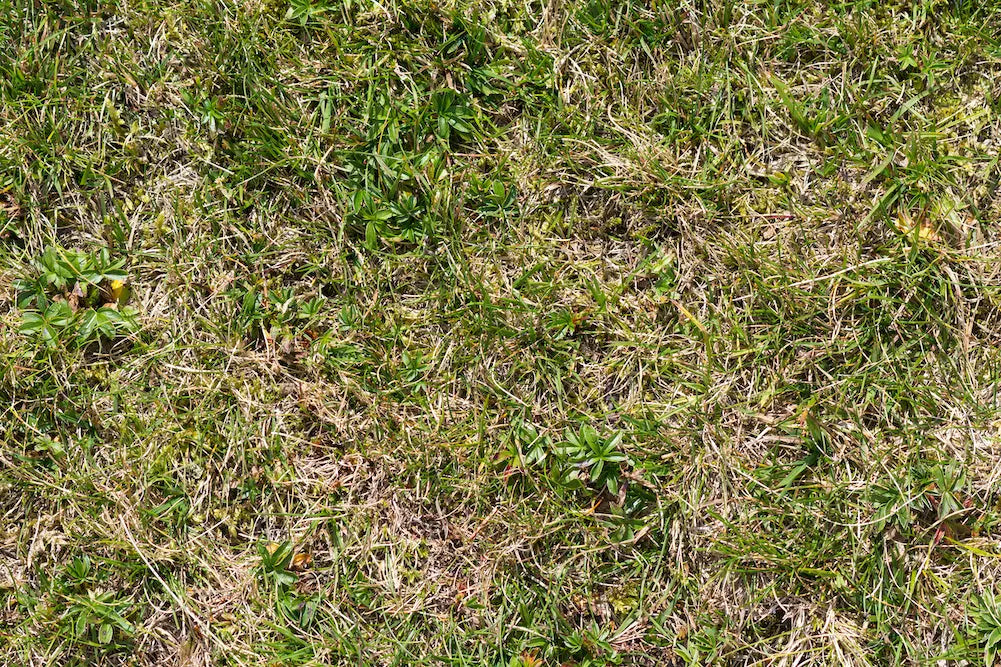A lush, healthy lawn is a source of pride for many homeowners, but maintaining it requires regular care, including managing thatch build-up. Thatch, the layer of organic material that accumulates between the soil surface and the green vegetation, can become problematic if it gets too thick. DIY dethatching is a cost-effective way to manage thatch and promote a healthier lawn. This article will guide you through the tools and techniques needed for successful DIY dethatching.
What the Heck is Thatch?
Thatch is composed of dead and living organic matter, including roots, stems, and shoots, that accumulates between the soil surface and the green vegetation. While a thin layer of thatch (less than 1/2 inch) can be beneficial, providing insulation and reducing soil compaction, excessive thatch can prevent water, nutrients, and air from reaching the soil, leading to a range of lawn health issues.
When to Dethatch
The best time to dethatch your lawn depends on the type of grass you have:
-
Cool-Season Grasses: Dethatch in the early spring or early fall when the grass is actively growing. These grasses include Kentucky bluegrass, fescues, and ryegrass.
-
Warm-Season Grasses: Dethatch in late spring to early summer when the grass is actively growing. These grasses include Bermuda grass, zoysia grass, and St. Augustine grass.
Avoid dethatching during periods of extreme heat or drought, as the grass may not recover well.
Tools for DIY Dethatching
Several tools are available for DIY dethatching, ranging from manual to mechanical options. The choice of tool depends on the size of your lawn and the extent of the thatch build-up.
-
Thatch Rake: A thatch rake is a manual tool with sharp, curved blades designed to pull up and remove thatch. It is best suited for small lawns or areas with light thatch build-up. Using a thatch rake can be physically demanding, but it provides precise control.
-
Power Rake: Also known as a dethatcher, a power rake is a machine with rotating blades that slice through the thatch layer and pull it to the surface. Power rakes are ideal for larger lawns or areas with heavy thatch build-up. They can be rented from garden centers or equipment rental stores.
-
Vertical Mower: A vertical mower, or verticutter, has vertical blades that cut through the thatch layer and bring it to the surface. It is similar to a power rake but often more effective for thicker thatch. Vertical mowers can also be rented.
DIY Dethatching Techniques
Follow these steps for successful DIY dethatching:
-
Prepare the Lawn: Mow your lawn to half its normal height and water it lightly a day or two before dethatching. This will make the thatch easier to remove.
-
Choose the Right Tool: Select the appropriate tool based on the size of your lawn and the extent of the thatch build-up. For small lawns or light thatch, a thatch rake may suffice. For larger lawns or heavy thatch, a power rake or vertical mower is recommended.
-
Adjust the Tool Settings: If using a power rake or vertical mower, adjust the blades to the appropriate depth. The blades should penetrate the thatch layer without cutting into the soil. Start with a shallow setting and gradually increase the depth if necessary.
-
Dethatch in Multiple Directions: For thorough dethatching, work in multiple directions. Start by dethatching in one direction, then go over the lawn again at a perpendicular angle. This will ensure that you remove as much thatch as possible.
-
Rake and Remove Debris: After dethatching, use a lawn rake to gather the thatch and other debris that has been pulled to the surface. Remove the debris from the lawn to prevent it from smothering the grass.
-
Water and Fertilize: Water your lawn deeply after dethatching to help it recover. Applying a balanced fertilizer can also promote new growth and improve lawn health.
-
Overseed if Necessary: If dethatching has left bare spots in your lawn, consider overseeding to fill them in. Choose a grass seed that is compatible with your existing lawn and suited to your climate.
Post-Dethatching Care
Proper post-dethatching care is essential for helping your lawn recover and preventing future thatch build-up:
-
Regular Mowing: Maintain a consistent mowing schedule, keeping the grass at the recommended height for your specific grass type. Avoid cutting more than one-third of the grass blade at a time to reduce stress on the plants.
-
Adequate Watering: Water your lawn deeply and infrequently to encourage deep root growth. Avoid shallow, frequent watering, which can lead to shallow roots and increased thatch accumulation.
-
Balanced Fertilization: Use a balanced fertilization program based on soil test results. Avoid over-fertilizing with high-nitrogen fertilizers, as this can promote excessive growth and thatch build-up.
-
Soil Aeration: Aerate your lawn regularly to improve soil aeration and reduce compaction. Aeration helps promote microbial activity in the soil, aiding in the decomposition of thatch.
Conclusion
DIY dethatching is a cost-effective way to manage thatch and promote a healthier lawn. By choosing the right tools and following proper dethatching techniques, you can effectively remove excessive thatch and improve the overall health of your lawn. Regular post-dethatching care, including proper mowing, watering, fertilization, and soil aeration, will help prevent future thatch build-up and ensure your lawn remains lush and vibrant. With these DIY dethatching tips, you can enjoy a beautiful, healthy lawn year-round.








Reader Interactions